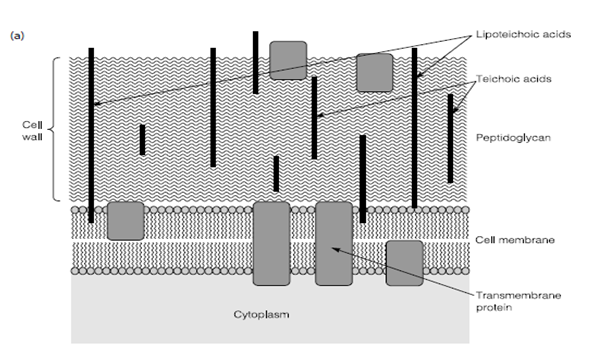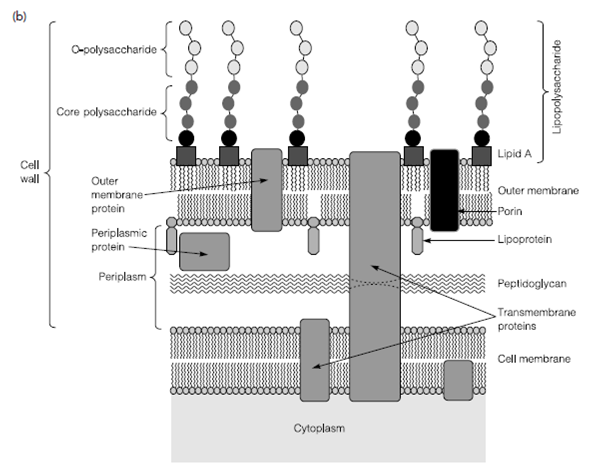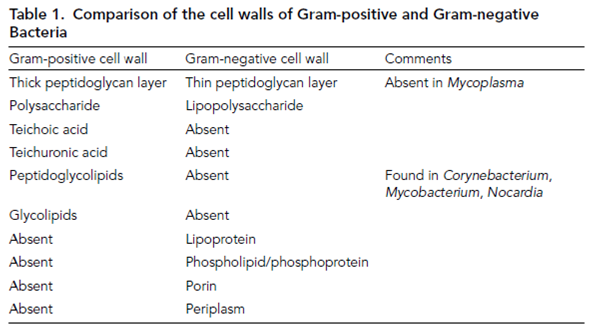Structure of the cell wall
The cell membrane of the prokaryotic cell alone is not sufficient to provide the rigidity that a free-living organism requires. In Gram-positive bacteria the shape and integrity of the cell is maintained by a thick single layer of peptidoglycan in Figure 1. However the Gram-negative cell wall has evolved a greater level of complexity with a


Figure 1. Bacterial cell walls. (a) Gram-positive Bacteria; (b) Gram-negative Bacteria.
second membrane outside the cell membrane to form a periplasm , in which a chemically same but thinner peptidoglycan layer appears. The outer membrane is composed mainly of lipopolysaccharide which is known as LPS. Both Gram-positive and Gram-negative cell walls have several proteins embedded in them penetrating by or attached to their surfaces. Some of these serve in the detection of environmental signals. Growth substrates, metabolites and secreted proteins are also allowed to pass by the thick outer layer by means of specific protein ports.
The main differences among Gram-positive and Gram-negative Bacterial cell walls are described in Table 1.
